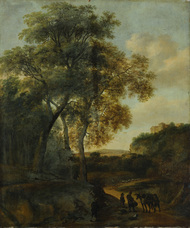Events / Exhibitions
20.10.2023 - 01.11.2023
Witnesses To Awakening․ The Photographers Abdullah Frères
Photography's history is inextricably tied to the Middle East. Following its invention in 1839, photographers rushed to document biblical and historical sites in Asia Minor – the Ottoman Empire. Made for Western audiences, these early images of the East entrenched the stereotype of a land stuck in the past, waiting to be colonized by European powers. It was not until 1858, when a trio of Armenian brothers from Istanbul purchased a photo lab from a German chemist that indigenous photographic practices began to flourish in the region, enabling a new era of self-representation for Middle Eastern people and cultures.
The Abdullah (Arabic translation of the Armenian Astvatsaturyan) brothers Viçen (1820–1902), Hovsep (1830–1908) and Kevork (1839–1918) came from a Catholic-Armenian merchant family with close ties to both the Ottoman court and the Armenian intelligentsia. Cleverly using these connections the brothers were soon appointed as official court photographers to Sultan Abdülaziz, which consolidated the Abdullah Frères as the pre-eminent photographic studio of the Ottoman Empire.
With branches in Istanbul, Cairo and Izmir, the studio was a large-scale operation whose clientele included local and international elites, the cultural circles and the bourgeoning tourism industry. Renowned for its striking portraits, the studio's fame rested with a vast catalogue of images that documented the different sides of the Ottoman Empire – from its rich architectural heritage and exotic landscapes to its multi-ethnic population and modernizing projects. These photographs circulated widely all over the world through tourist trade, the press and academic networks, helping to shape the global perceptions of the Middle East as an ancient land on the cusp of radical transformations.
Widely recognized today as founders of indigenous photography in the region, Abdullah Frères' legacy remains to be properly assessed for its diverse manifestations and implications. While frequently relying on problematic orientalist tropes in their depictions of the East, the Frères also pushed photography in new directions. Taking the camera to the streets and public events they were responsible for some of the earliest documentary and reportage photographs. Even less acknowledged is their contribution to the Armenian 'Zartonk' (Enlightenment) of the 19th century. Educated by luminaries such as Mgrdich Peshiktashlian and Ghevond Alishan, the brothers went on to play an active role as proponents of Armenian cultural modernity and liberation through their collaborators with scholars, artists, architects and political leaders.
Based on the collections of ManBan Visual Culture Archive and important loans from the Museum of Literature and Arts and the National Library of Armenia, Witnesses to Awakening is the first retrospective of Abdullah Frères' work in Armenia that spans their practice from the early 1860s until the studio's closure in 1899. Charting the Frères' engagement with various genres and styles of 19th century photography, the show aims to reveal the inherent contradictions and complexities of their work, while showcasing the refined, modern aesthetic qualities that made the studio such a transcultural success.
Including the work of other Ottoman-Armenian photographers from the Abdullah Frères' orbit, the exhibition also highlights the dominant and singular position of Armenian photographic networks in 19th-century Middle East, revealing the remarkable contribution of Armenian image-makers to the evolution of global modern visual culture.
Exhibition curator: Vigen Galstyan
